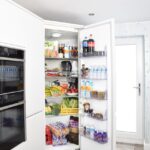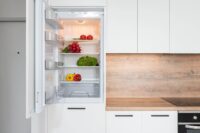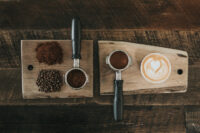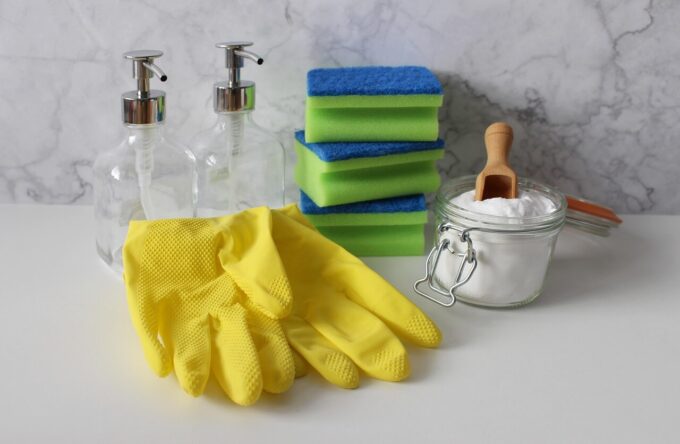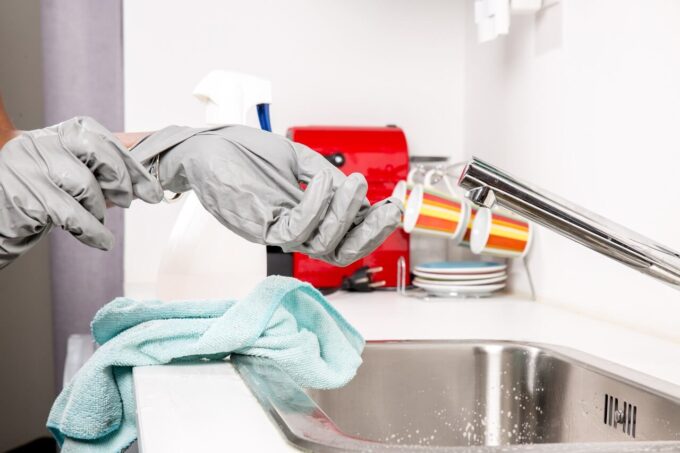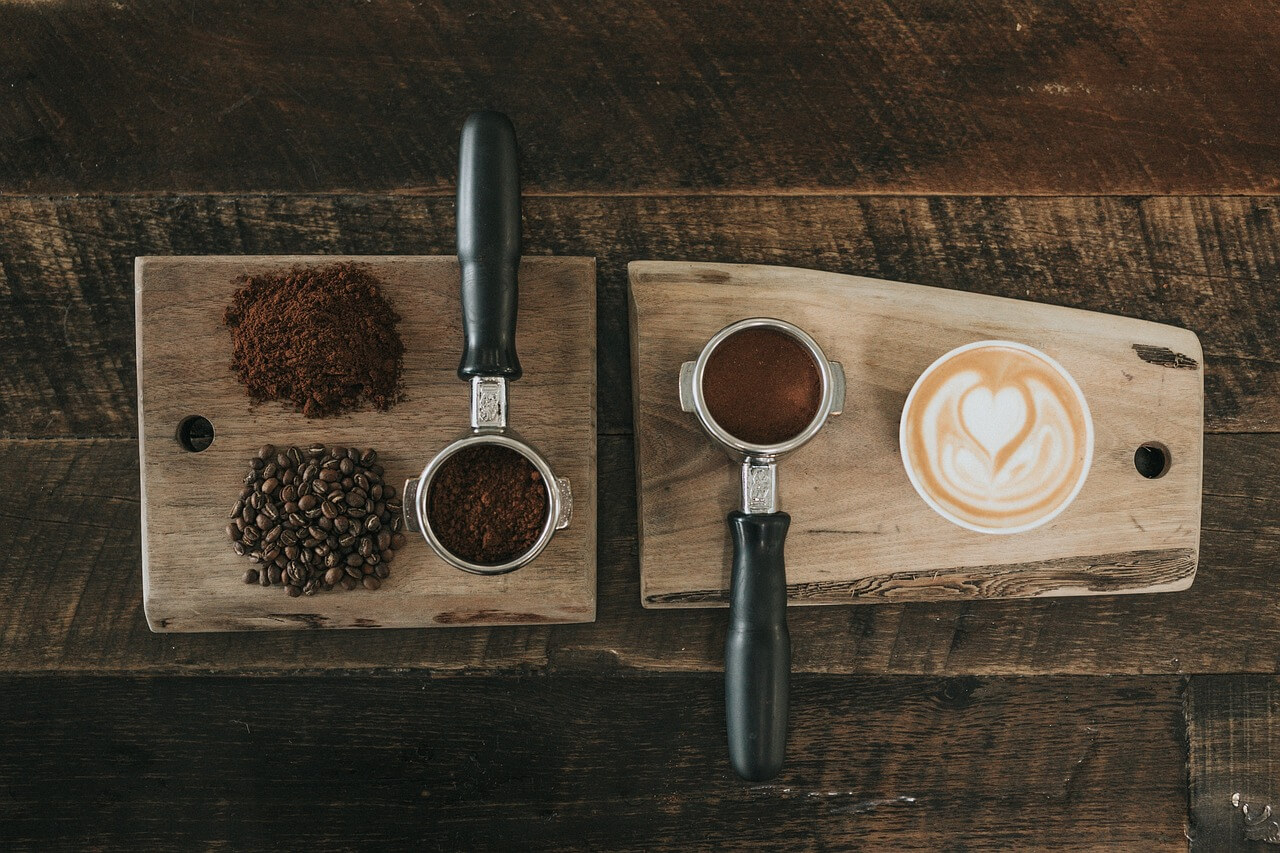
Keeping your cutting board clean is essential for food safety and hygiene. Over time, food particles, bacteria, and odors can build up, making your board a potential breeding ground for harmful germs. Whether you use a wooden, plastic, or bamboo cutting board, knowing the right cleaning methods will help extend its lifespan and keep your kitchen safe. In this guide, we’ll cover the best ways to clean, sanitize, and deodorize your cutting board.
How to Properly Clean Wooden, Plastic, and Bamboo Cutting Boards
Different cutting boards require different cleaning techniques. Using the wrong method can damage the material or make it less effective over time. Here’s how to clean each type properly:
Wooden Cutting Boards
- Avoid soaking in water – Wood absorbs moisture, which can cause warping or cracking.
- Use mild soap and warm water – Scrub gently with a sponge or soft brush.
- Disinfect naturally – Sprinkle coarse salt on the surface and scrub with half a lemon.
- Dry immediately – Use a clean towel to wipe the board dry and let it air dry standing up.
- Oil regularly – Apply mineral oil once a month to maintain the wood’s durability.

Plastic Cutting Boards
- Use dish soap and warm water – Wash thoroughly after each use.
- Sanitize with vinegar or bleach – A solution of 1 tablespoon of bleach per gallon of water works well.
- Scrub stains with baking soda – Mix with water to form a paste and scrub.
- Dry completely – Prevent mold growth by ensuring the board is dry before storing.
Bamboo Cutting Boards
- Avoid dishwasher cleaning – High heat can cause splitting.
- Use mild detergent – Wash gently by hand with warm water.
- Remove stains with baking soda and lemon – This helps keep the surface fresh.
- Apply oil occasionally – A light coat of mineral or coconut oil keeps the bamboo from drying out.
Can You Wash a Cutting Board in the Dishwasher?
Many people wonder if they can toss their cutting board into the dishwasher for convenience. Here’s what you need to know:
- Wooden and bamboo boards – Never put them in the dishwasher! High heat and prolonged exposure to water can cause cracking and warping.
- Plastic boards – While many plastic cutting boards are dishwasher-safe, repeated high-heat cycles can make them brittle. If washing by hand, sanitize with vinegar or bleach.
- Alternative deep cleaning method – For a thorough clean, soak plastic boards in a vinegar solution (1:4 ratio of vinegar to water) for 10 minutes, then rinse and dry.
How to Remove Odors and Stains Naturally
Over time, cutting boards can absorb odors from garlic, onions, and raw meat. Stains from fruits and vegetables can also linger. Here are the best natural solutions:
- Vinegar – A natural disinfectant that kills bacteria and neutralizes odors. Wipe down the board with white vinegar after use.
- Baking Soda – Make a paste with water and scrub to lift stubborn stains.
- Lemon – Cut a lemon in half and rub it directly on the board for freshening and mild disinfecting.
- Combination method – Sprinkle baking soda, scrub with a lemon, let it sit for a few minutes, then rinse.

Why Disinfecting Your Cutting Board Matters
A clean-looking cutting board doesn’t necessarily mean it’s free from bacteria. Raw meat, poultry, and fish can leave behind harmful germs that require proper disinfection.
- Common bacteria on cutting boards – Salmonella, E. coli, and Listeria can survive on the surface if not cleaned properly.
- Simple disinfecting methods:
- Use a solution of 1 tablespoon of bleach per gallon of water.
- Apply undiluted white vinegar and let sit for 10 minutes before rinsing.
- Hydrogen peroxide is another effective natural disinfectant.
- How often should you sanitize? – Disinfect your cutting board at least once a week, or after handling raw meat.
Common Mistakes to Avoid
Even with good intentions, many people make mistakes when cleaning their cutting boards. Here’s what you should avoid:
- Using harsh chemicals on wooden boards – Strong cleaning agents can damage wood fibers.
- Soaking wooden boards in water – This leads to swelling, warping, and cracking.
- Mixing raw and cooked food on the same board – Always use separate boards for meat and vegetables to prevent cross-contamination.
- Not replacing old boards – Deep grooves and scratches can harbor bacteria that are hard to clean. If your board is heavily worn, consider replacing it.
Keeping your cutting board clean and properly maintained ensures safe food preparation and extends its lifespan. By using natural cleaning methods and following these simple guidelines, you can prevent bacteria buildup, eliminate odors, and keep your board looking fresh. Stick to the right cleaning techniques, avoid common mistakes, and enjoy a safer kitchen environment.
Latest Posts
How to Clean Your Walls Without Damaging the Paint
Reality check—walls accumulate debris over time. From oily handprints around switch plates...
3 Mins readHow to Deep Clean Your Kitchen in One Afternoon
Face it—thoroughly scrubbing your kitchen rarely tops anyone’s list of enjoyable activities....
3 Mins readHow Often Should You Really Be Cleaning These 10 Things?
(Unexpected insights for a healthier home environment) Most households maintain some form...
3 Mins readHow to Attract Pollinators to Your Backyard Garden
Dreaming of a vibrant, flourishing garden space? Whether you’re cultivating vegetables, nurturing...
3 Mins read

